Speculaas or Speculoos, that is the question
...what is the difference between Speculaas and Speculoos?
It is a question I’ve often been asked over the years, most recently by Felicity Cloake from The Guardian. If you are not Belgian, Dutch or German, you will think of Biscoff biscuits when you read speculaas or speculoos. In fact, on my recent book tour to the USA, I’ve spotted Biscoff speculoos often, there are even Biscoff kiosks at San Francisco’s Fisherman’s Wharf. Biscoff biscuits are to us Belgians what Walker’s shortbread are to the British: just another biscuit, but one everyone buys and everyone loves. Like Walker’s shortbread, Biscoff speculoos are now almost more famous abroad than in Belgium.
Speculaas and Speculoos are synonymous for my region in the world: Belgium.
It is the biscuit that every family will have in their biscuit tin, a biscuit which is hardly ever made at home because our stores and bakeries are full of fantastic alternatives. While they are eaten all year round in the Low Countries, they remain very much connected to the winter period, the feast of Saint Nicholas, Saint Martin and Christmas. For the children’s feast of Saint Nicholas (Sinterklaas), the speculaas is made into the shape of the bishop Saint Nicholas. He is celebrated the 5th of December if you are from the Netherlands and Belgium the 6th of December.
As a child growing up, a speculaas with a cup of milk was my before-bed ritual, something I still do often today. Many people also love dunking speculaas in their coffee and then placing the biscuits between two slices of bread, this is how the Biscoff speculoos spread came to be. In a Belgian TV show, a woman decided to invent a ready-made speculoos spread to replace the biscuits, Biscoff bought her out, and this is how we now have jars of Biscoff spread. But back to speculoos and speculaas…
Origin story
Once butter came into the mix and sugar replaced honey, tough peperkoek (a bread-like gingerbread) and honey cakes like, Lebkuchen, Printen and taai-taai got a new sibling in speculaas or “speculatie” (Spekulatius in German). The origin of the name is unclear, but etymologists have two theories. One is that it comes from “speculum” being Latin for mirror-image because the finished printed koek is the mirror image of the carved speculaas mold (koekplank), which of course makes sense and explains why the word appears not just in Dutch but also in German texts. The other theory is that it comes from “speculator,” an old word for bishop, referencing the fact that speculaas is a popular Saint Nicholas treat and the biscuits are often printed in his image. While the term speculaas is the most common, people who are over 80 years old will usually use the term speculatie. Not speculoos.
In comes the now world-famous Biscoff
So what about SPECULOOS? Famous for speculaas and other biscuits at home and abroad, bakery Maison Dandoy was started in 1829. They used a variation of the word speculatie or speculaas – speculoos – as in French, making them the first to introduce the word speculoos into their branding. Their bakery was and is famous and is still situated just off the Grande Place of Brussels. Inside the store, you can see their vast collection of speculaas molds (see photo below) and many bakes are still baked onsite. Maison Dandoy’s speculaas which they still call speculoos is made with cinnamon and cloves which are less spices than in old-fashioned speculaas.
A century later, another bakery, Lotus (Biscoff), launched its speculoos too, using only cinnamon. They were the first company to pack cookies individually for distribution in coffee houses and on airplanes, which made it possible for the biscuit to travel and the brand to become widespread. Maison Dandoy didn’t follow Lotus and continued on their own path choosing exclusivity over quantity as a marketing strategy. While Lotus are inexpensive, Maison Dandoy is upmarket.
Today when speaking of speculaas, the cookie will contain a variety of spices, but when speaking of speculoos, we mean the Lotus Biscoff biscuit, which contains only a tiny bit of cinnamon, getting its warm flavor from kandij syrup and caramelizing sugar. The texture of the biscuit melts on the tongue and is completely different to the speculoos from Maison Dandoy which is harder, like speculaas. Lotus has taken over the world in recent years, rebranded as Biscoff, which created a public outcry in Belgium where everyone had grown up with Lotus Speculoos. Lotus then compromised and kept the word Speculoos on the packaging, the controversy was a welcome bit of advertising for a biscuit we take for granted in Belgium, but a biscuit we also cannot live without.
What bothers me about speculoos/speculaas is that people around the world now think that Biscoff speculoos is our traditional Belgian speculaas biscuit, while in reality Biscoff biscuits are their own category of biscuit. Speculaas is our traditional biscuit and it contains more than one spice, preferably several and it is a harder biscuit, using less butter. It’s like apples and pears, both fruit but not the same flavour and texture.
A special type of sugar
To create the perfect Belgian speculaas and speculoos you need a product which is virtually made no where else than in Belgium: kandij suiker or candy sugar which is an odd translation but the one given to it.
Kandij sugar is caramelised sugar, which makes it of course brown. It is made by slowly heating white beet sugar several times and resting it until it creates caramel-colored crystals that form around metal frames, which used to be threads woven through copper sugar-boiling kettles. The slower the sugar is heated, the bigger the sugar crystals. What is left, after heating the sugar several times until the crystals are the required color – light or dark brown – is the stroop (syrup), black as coffee, intensely and uniquely flavored, and the iconic topping of our pancakes and filling of our waffles. It is as dark as molasses but with a gentle flavor more akin to British golden syrup. A portion of the crystals is kept whole for some uses and the rest is ground into light or dark brown kandij sugar, also known as cassonade sugar. This lengthy process allows the sugar refinery to be self-sufficient and use up all of their product, as their only leftovers are the stroop, while other brown-sugar makers need to buy stroop or molasses to color their sugar brown instead of caramelizing it.
The difference between kandij sugar and brown sugar
Cassonade or kandij sugar is not to be confused with brown sugar or basterdsuiker, which is popular in the Netherlands and other parts of the world. This is white sugar to which invert sugar is added to prevent hardening, colored with caramel to obtain brown sugar. This is a different product as the process is much less complicated and quicker than cassonade or kandij sugar, but it can also be used for the recipes that require brown sugar. The invert sugar in the sugar will keep bakes moist for longer. Another type of brown sugar is made by adding sugarcane molasses to refined white sugar – washing this type of sugar will reveal underlying white crystals. This is a process that is common in the United States.
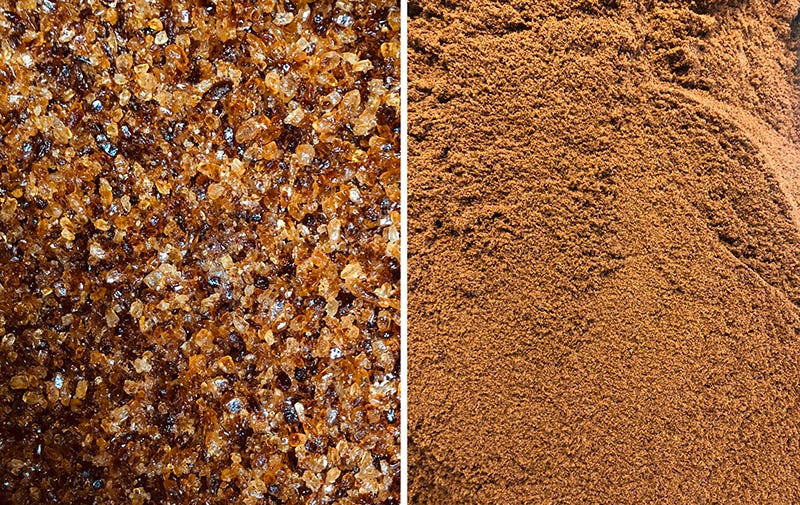
People have tried to caramelise their sugar in a quest to create their own version of the Biscoff biscuit, but even though it will come closer than white sugar, you cannot recreate the kandij sugar which is made in the sugar refinery in Belgium, it is much darker as it has been heated to a higher temperature. Online might be a place to find it, if you want to try it goodle Candico Cassonade and you’ll find it. Or visit me and you’ll be sent home with a bag!
That said, in Germany speculaas is more often made with white and light brown sugar resulting in a less robust flavour but still a very satisfying biscuit.
Dark rye and Honey cake - book on sale!!!
Before we move over to the recipe I want to give you a heads-up that my book Dark rye and Honey cake, Festival baking from Belgium, the heart of the Low Countries is currently reduced to £12 / €14 (from £ 26) on Amazon UK here, they send to the EU without added customs. For the Dutch edition you can get signed copies at bookstore Stad Leest and Luddites Books & Wine in Antwerp. Perfect for Christmas gifts!
The recipe
The recipe here from my book Dark rye and Honey cake (Van wafel tot koek) makes speculaas, not speculoos. It is the closest I could get to my memory of the large printed speculaas we were given each year in school around Saint Nicholas time, usually after a trip to the Antwerp youth theater.
The more buttery and sugary a dough gets, the more satisfying it becomes to eat, but the more the print of a mold fades. I have given you butter quantities that will result in a sharp imprint from the mold, but also for the more delicate variation which is more like Biscoff, made without a wooden mold. This is one that won’t keep an imprint well because it spreads out during baking.
If you don’t have a wooden speculaas or gingerbread mold, you can still make these cookies. Just use your favorite cookie cutter – hearts are always good – or a cookie stamp.
Speculaas
Recipe from my book ‘Dark Rye and Honey cake’ - ‘Van wafel tot koek’
Makes 56 small speculaas using a 4 x 6 cm (11/2 x 21/2 inch) cutter, wooden mould or stamp
160 g (53/4 oz) unsalted butter, softened (when using a mould); or use 190 g (63/4 oz) butter for the softer more Biscoff like biscuit (when not using a mould)
250 g (9 oz) dark brown sugar (kandij cassonade is best but use any you have)
1/2 teaspoon sea salt
2 tablespoons speculaas spices (see below)
45 ml (11/2 fl oz) full-fat milk
320 g (111/4 oz) plain flour or white rye flour
50 g (13/4 oz) cornflour (cornstarch)
50 g (13/4 oz) almond meal
1 teaspoon bicarbonate of soda (baking soda)
Almond slivers (optional)
Rice flour, to dust a wooden mould, if using (you can use plain flour but rice flour works a better)
Speculaas spices
(Makes more than you need, but keeps very well in a jar)
2 tablespoons ground cinnamon
1/2 teaspoon ground cloves
1/4 teaspoon each of ground ginger, nutmeg, coriander, allspice, mace, cardamom, long pepper (or the pepper you have)
Method
Cream the butter with the brown sugar. Creaming cuts little air pockets into the fat, which is why this step is important and best achieved with an electric mixer. The mixture has to appear lighter in colour than when you first started to beat it and it will also become creamier as you go. People often don’t take creaming far enough, but please do: you will be amazed if you wait a little and see how different the mixture looks.
Add the salt, speculaas spices and the milk and combine well. Blend the flour with the cornflour, almond meal and bicarbonate of soda and add it to the butter and sugar mixture bit by bit. Knead until well combined, which can take a while, and don’t be alarmed if the dough seems dry and crumbly; it will come together into a smooth yet sturdy dough by kneading with your hands. You can use a mixer for the butter and sugar, but for the rest you need elbow grease.
Wrap in plastic wrap and set aside in a cold place overnight or in the fridge for an hour (or up to 3 days if you have time).
Preheat the oven to 170 C (325 F). Do not use the fan setting.
To give them a nutty almond base, scatter almond slivers all over a tray lined with baking paper. This will also prevent the dough from spreading out so it will keep its shape and imprint better.
Knead the rested dough to make it supple: if it is crumbly or dry, this means your sugar or flour were very dry, but just knead and it will come together.
Flour the mould with rice flour, lay a small piece of dough on top and press it in with the palm of your hand to work it into the carving. Now roll over with a rolling pin to even the top. Then use your fingertips to gently release the dough from the mould around the sides first, then gently releasing it completely from the carving. Trim off any excess dough. Lay it on the baking tray and repeat the process until you run out of dough.
If using a cookie cutter, roll out the dough to around 8 mm (3/8 inch) thick on a lightly floured work surface and cut out as many biscuits as you can, gathering the offcuts and kneading them back together. Or use a piece of lace placed over your floured dough, then use a rolling pin to press the design into it. Rest the speculaas in the fridge for an hour: this will help them keep their shape.
Bake in the middle of the oven. Bake small speculaas for about 20 minutes and large for 20–25 minutes.
As the dough is brown, it’s hard to give a cue, but I find that they are best when the biscuits are a darker brown around the edges. The speculaas are bendy and soft when freshly baked, but will quickly firm up. Small ones can be transferred to a wire rack immediately, but leave larger ones, especially figures, on the tray to rest until firm to avoid decapitation or severing an arm.
When stored in an airtight biscuit tin, speculaas keep for 3 weeks, so it makes sense to make loads and reap the benefits for many tea breaks to come.

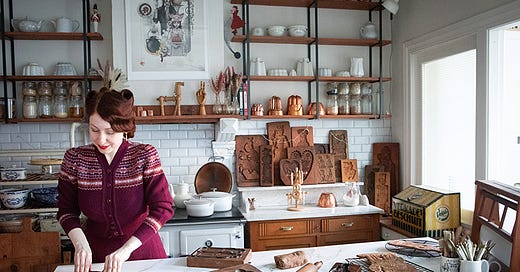



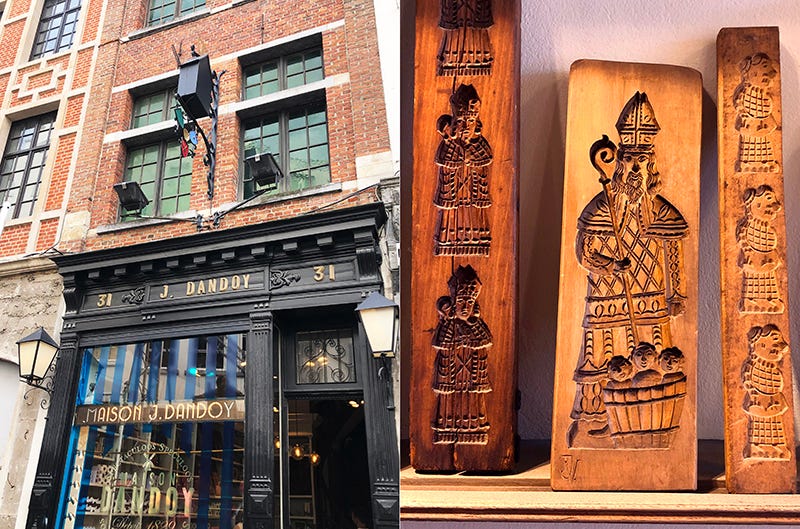
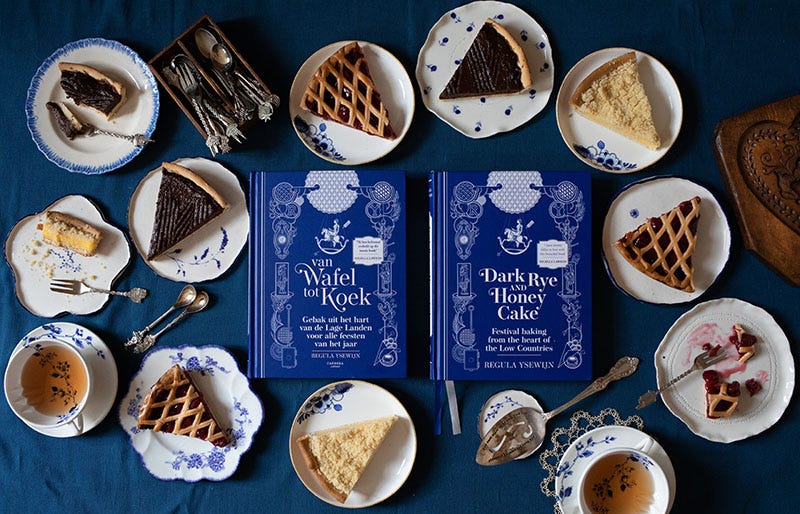
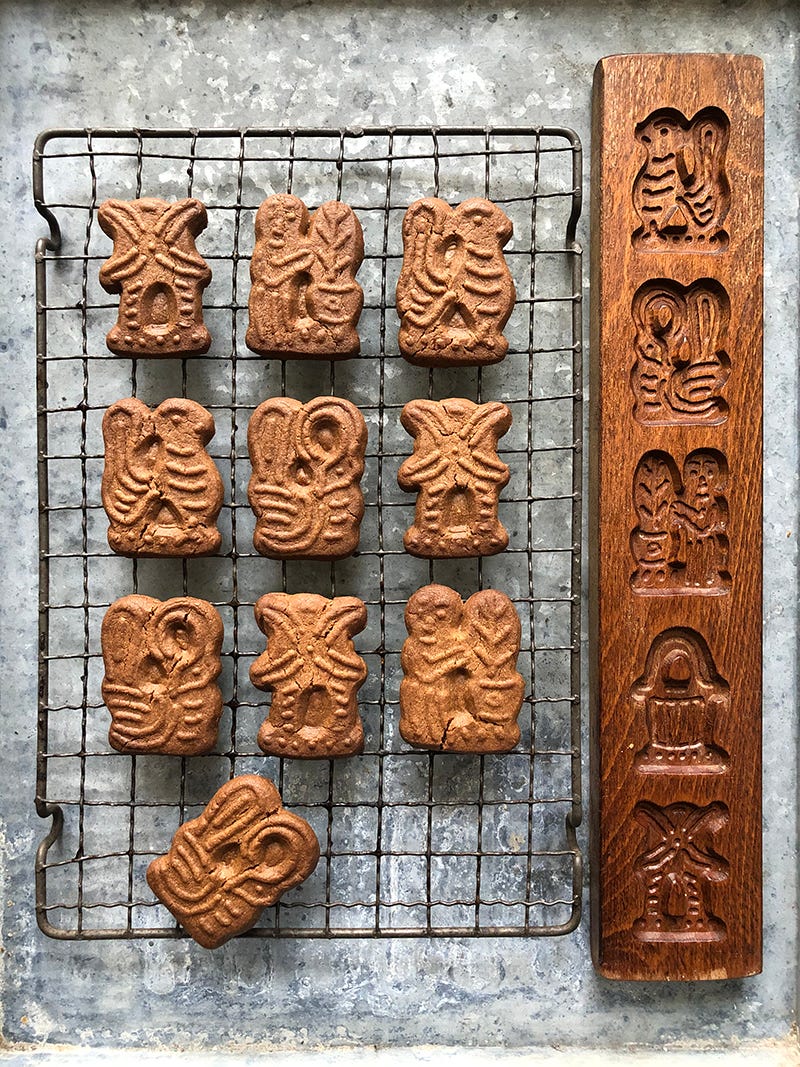
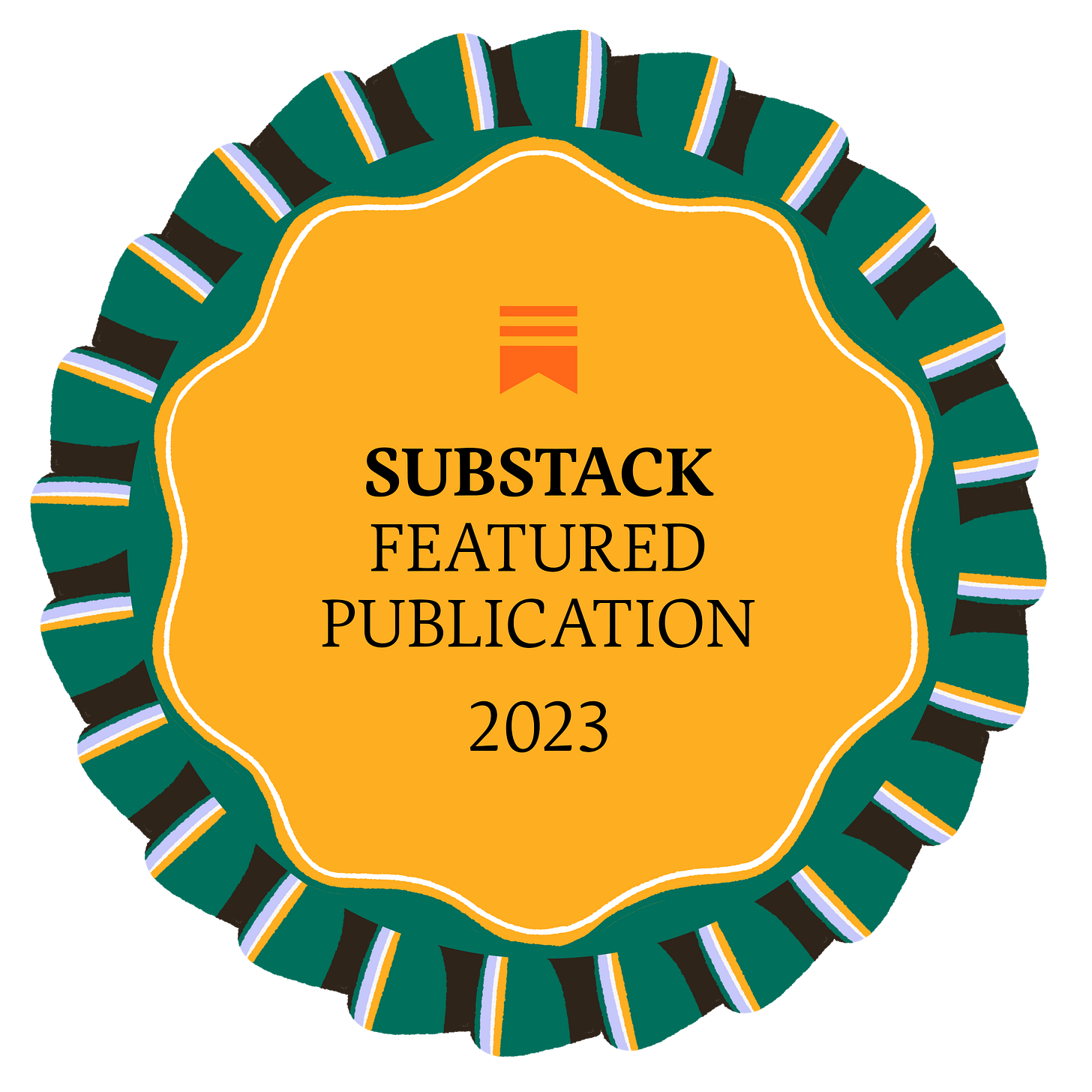
oooh ! Belgian now US citizen - we just had an Aldi open and I immediately bought some Lebkuchen. One store has Lotus - Biscoff cookies. How I miss the speculaas from Vermeiren in Elversele. And I remember the kandij suiker on strings grandma used to have in her kitchen. We just ate them off the cords. Tried to bake my own long ago, but they did not come out well. I must try this recipe LOL thank you so much !
One of my fondest memories of a trip last year to Brussels was going to Maison Dandoy and ordering a box of one each of every single type of cookies they have! Many were variations on speculaas, and all were delicious. I bought a bag of "cassonade" at a French grocery store later in the trip, excited to try making true speculaas at home, only to discover that it was made from cane, not beet, sugar. Regardless, I look forward to trying these!